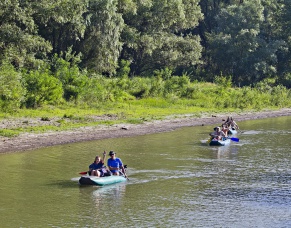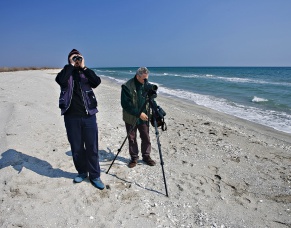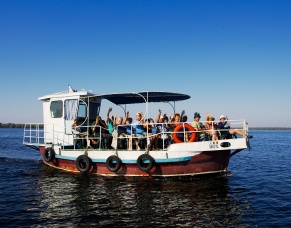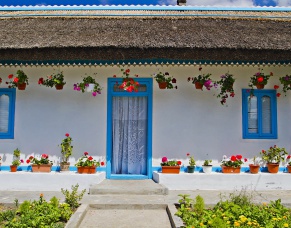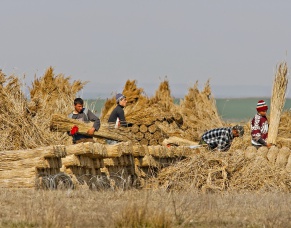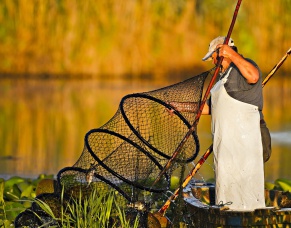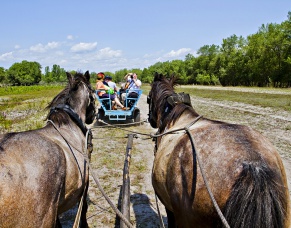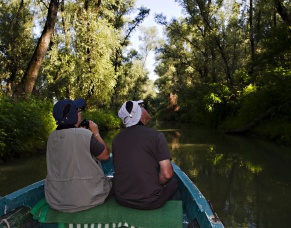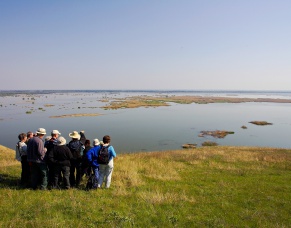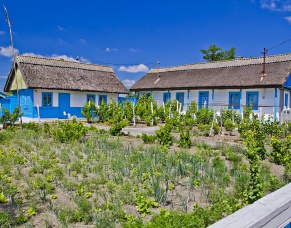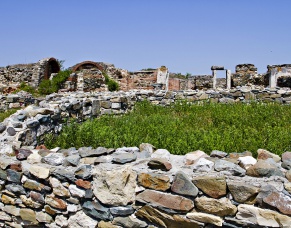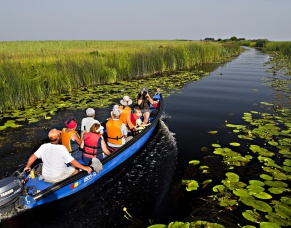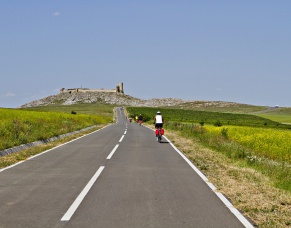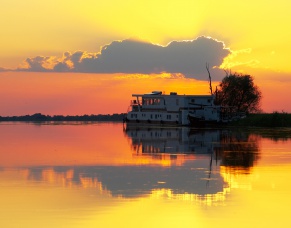Danube Delta Biosphere Reserve - People
A Garden of Eden for People and Wildlife
Delta's special natural conditions have favored the development of human settlements since ancient times. People have adapted to local conditions and formed 25 settlements (including the town of Sulina, having around 12,500 inhabitants) spread throughout the reserve area, cultivating traditions, economic development and the rich culture that can be observed in all villages. More than 14 ethnic groups living in harmony, represent an example of multi-ethnic tolerance. Housings specific to each major ethnic group living in this region (Romanian, Ukrainian, Russian-Lipovan ) with reed roofs, spread in all localities in the Danube Delta, fisheries (“cherhanale”)- specific buildings for commercial fishing activity, ChiliaVeche’s church, a replica of that in Donaueschingen - Germany at the springs of the Danube, Sulina multi-confessional cemetery - a true history of the places marked by tombstones, Sulina and St. Gheorghe light houses, the palace of the European Danube Commission (CED) in Sulina, are only some of the examples in this matter. Archaeological vestiges located in the contact area between the Danube and the Dobrogea Plateau, historical monuments of architecture and art, Orthodox churches and monasteries, a Paleo-Christian basilica, museums and cultural objectives complete the natural attractions of the Danube Delta.
Tourist routes in the Danube Delta Biosphere Reserve
Tourism in the Danube Delta is worldwide recognized, thanks to the unique character of the region, which combines natural attractions with recreational facilities (fishing, beaches) and ethnical-cultural attractions, reflected in folk architecture, traditions, gastronomy and customs. Within the reserve, 24 tourist routes have been established, of which 15 routes that can be performed only by naval transportation (boat routes) and 9 trails that can be done by hiking or road transport (hiking trails). Boat routes start from the main entry points in reserve: Tulcea, Murighiol, Jurilovca or from the localities situated in the reserve: ChiliaVeche, Crişan, Sulina, Sf. Gheorghe. Hiking trails start from Tulcea, Murighiol, Uzlina, Sulina, Sf. Gheorghe, ChiliaVeche.To inform visitors and local people, on the Reserve territory, there are several Information, Documentation and Ecological Education Centers organized by Danube Delta Biosphere Reserve Authority (DDBRA) in Tulcea, Crişan, Sulina, Murighiol, Sf. Gheorghe, Gura Portiţei and ChiliaVeche village.
Accomodation facilities have been increased through hotels, pensions, villas, floating hotels or campings. Opportunities to visit the Danube Delta are varied and depend on the time available and the requirements of visitors. The access of visitors in the reserve is based on the access permit issued by the DDBRA at its headquarters in Tulcea or in points organized for this purpose.Visitors enthusiastic in fishing should also know that this activity can be practiced in the Danube Delta under a valid fishing license issued by DDBRA.

